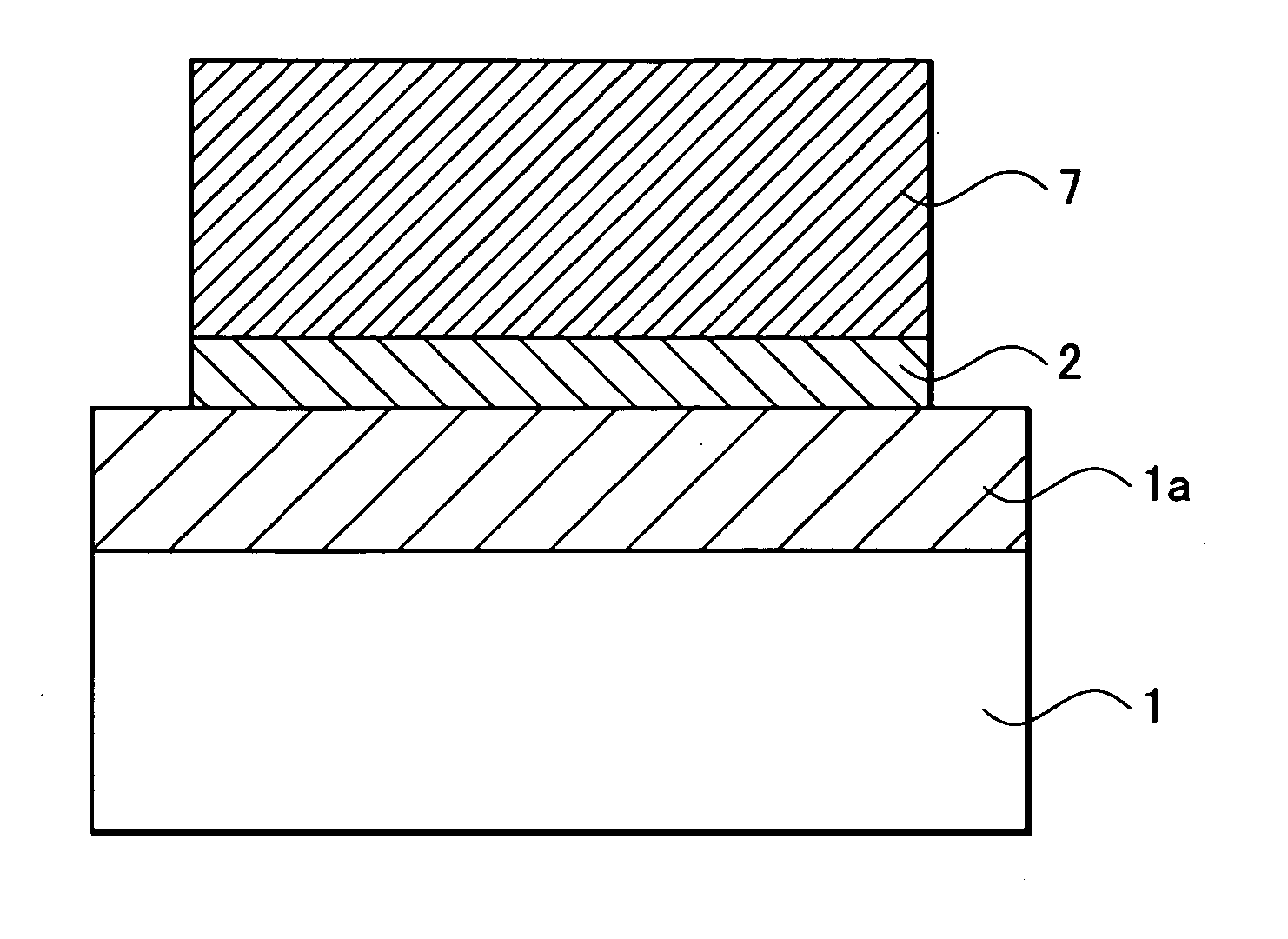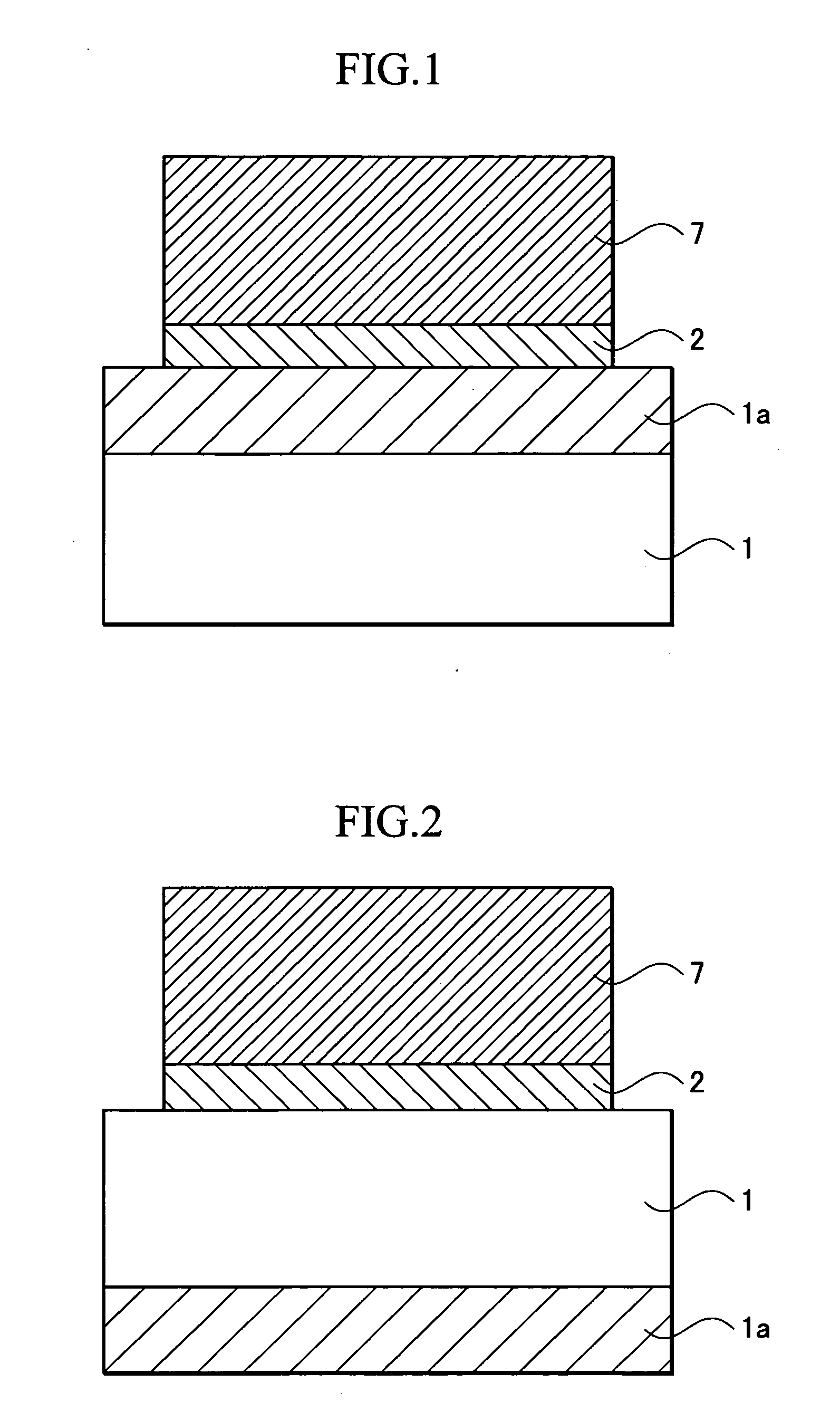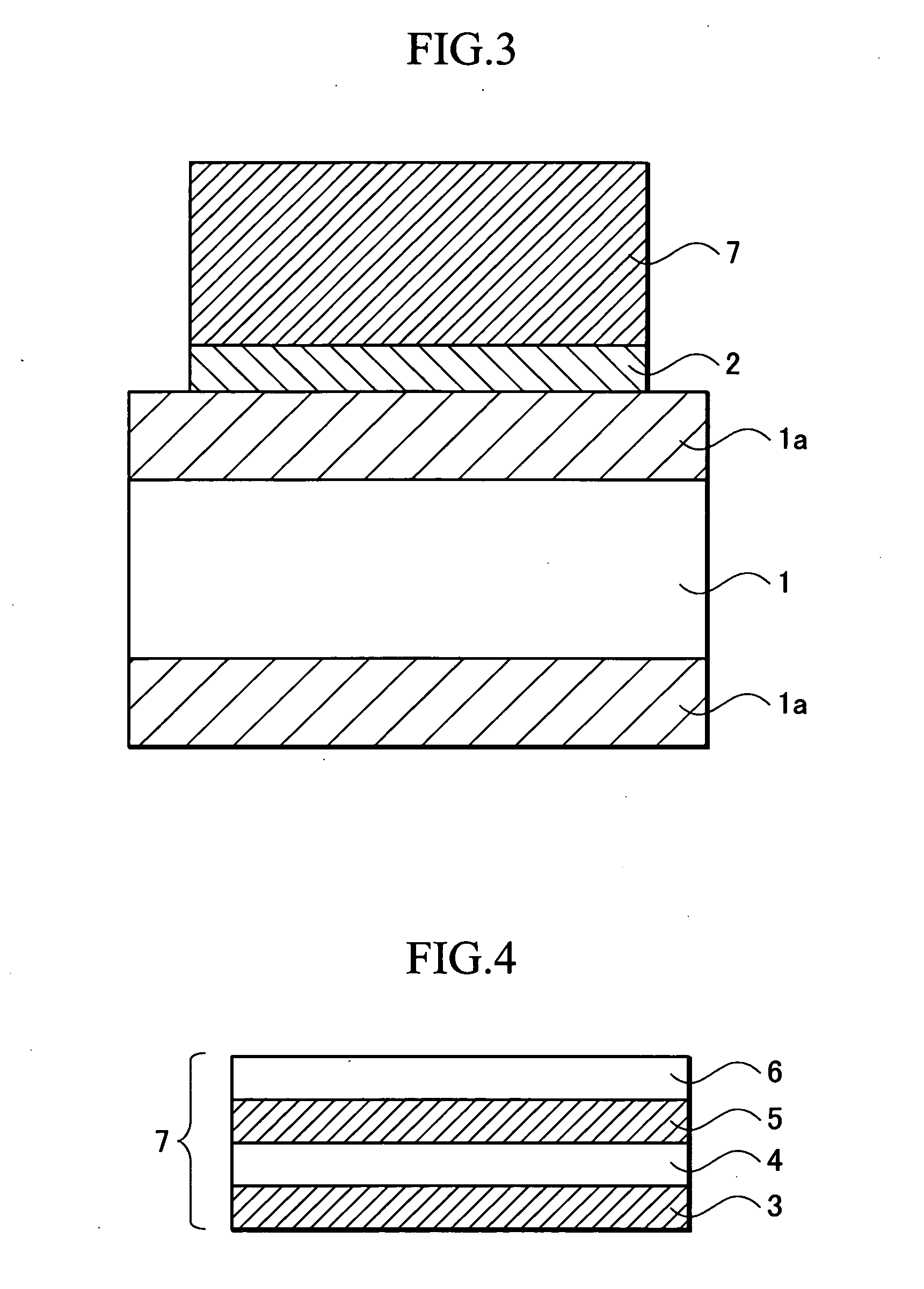Absorption type multi-layer film ND filter
a multi-layer film and filter technology, applied in the field of absorption type multi-layer film nd filter, can solve the problems of difficult to make small wavelength dependence of transmittance and also control reflectance, and the spectral characteristics of the filter are not uniform over the whole visible range, and achieve the effect of flat transmittance characteristics, good reproducibility, and superior mass productivity
- Summary
- Abstract
- Description
- Claims
- Application Information
AI Technical Summary
Benefits of technology
Problems solved by technology
Method used
Image
Examples
example 1
[0064] An absorption type multi-layer film ND filter having a structure shown in Table 1 was produced, in which an optical multi-layer member consisting of Ni metal layers each containing 7.5% by weight of Ti and SiO2 layers both of which layers were alternately layered in the number of four layers in total was formed on a substrate via an adherent layer formed of SiOx (x is less than 2).
[0065] Here, as an Ni type material target, an Ni target containing 7.5% by weight of Ti was used (a target available from Sumitomo Metal Mining Co., Ltd.). This target containing 7.5% by weight of Ti was stably dischargeable also when placed on a non-magnetic-purpose cathode.
TABLE 1(2)Adherent layer:SiOx5 nm(3)Optical multi-layer memberNi—Ti6 nmfirst layer:(4)Optical multi-layer memberSiO290 nm second layer:(5)Optical multi-layer memberNi—Ti9 nmthird layer:(6)Optical multi-layer memberSiO275 nm fourth layer:
[0066] Stated specifically, films (2) to (6) shown in Table 1 were formed in this order, ...
example 2
[0071] Under the same conditions as those in Example 1 except that the Ni type material target was changed for an Ni target containing 7.1% by weight of Ti (a target available from Sumitomo Metal Mining Co., Ltd.), the films (2) to (6) shown in Table 1 were formed in this order to produce the absorption type multi-layer film ND filter shown in FIG. 1.
[0072] Incidentally, this Ni target (available from Sumitomo Metal Mining Co., Ltd.) was also stably dischargeable on a non-magnetic-purpose cathode.
[0073] It was then ascertained that the transmittance of the absorption type multi-layer film ND filter according to Example 2 in the visible spectral range (wavelength: 400 nm to 800 nm) was 32% to 40% and the ND filter showed transmittance characteristics that were superior in flatness for wavelengths. Also, the reflectance in the visible spectral range was 4% or less, showing a good reflection preventive effect as well.
[0074] In respect of a change in the rate of film formation of the...
example 3
[0076] Under the same conditions as those in Example 1 except that the Ni type material target was changed for an Ni target containing 15% by weight of Ti (a target available from Sumitomo Metal Mining Co., Ltd.), the films (2) to (6) shown in Table 1 were formed in this order to produce the absorption type multi-layer film ND filter shown in FIG. 1.
[0077] Incidentally, this Ni target (available from Sumitomo Metal Mining Co., Ltd.) was also stably dischargeable on a non-magnetic-purpose cathode.
[0078] It was then ascertained that the transmittance of the absorption type multi-layer film ND filter according to Example 3 in the visible spectral range (wavelength: 400 nm to 800 nm) was 38% to 44% and the ND filter showed transmittance characteristics that were superior in flatness for wavelengths. Also, the reflectance in the visible spectral range was 4% or less, showing a good reflection preventive effect as well.
[0079] In respect of a change in the rate of film formation of the ...
PUM
| Property | Measurement | Unit |
|---|---|---|
| thickness | aaaaa | aaaaa |
| transmittance | aaaaa | aaaaa |
| reflectance | aaaaa | aaaaa |
Abstract
Description
Claims
Application Information
 Login to View More
Login to View More - R&D
- Intellectual Property
- Life Sciences
- Materials
- Tech Scout
- Unparalleled Data Quality
- Higher Quality Content
- 60% Fewer Hallucinations
Browse by: Latest US Patents, China's latest patents, Technical Efficacy Thesaurus, Application Domain, Technology Topic, Popular Technical Reports.
© 2025 PatSnap. All rights reserved.Legal|Privacy policy|Modern Slavery Act Transparency Statement|Sitemap|About US| Contact US: help@patsnap.com



